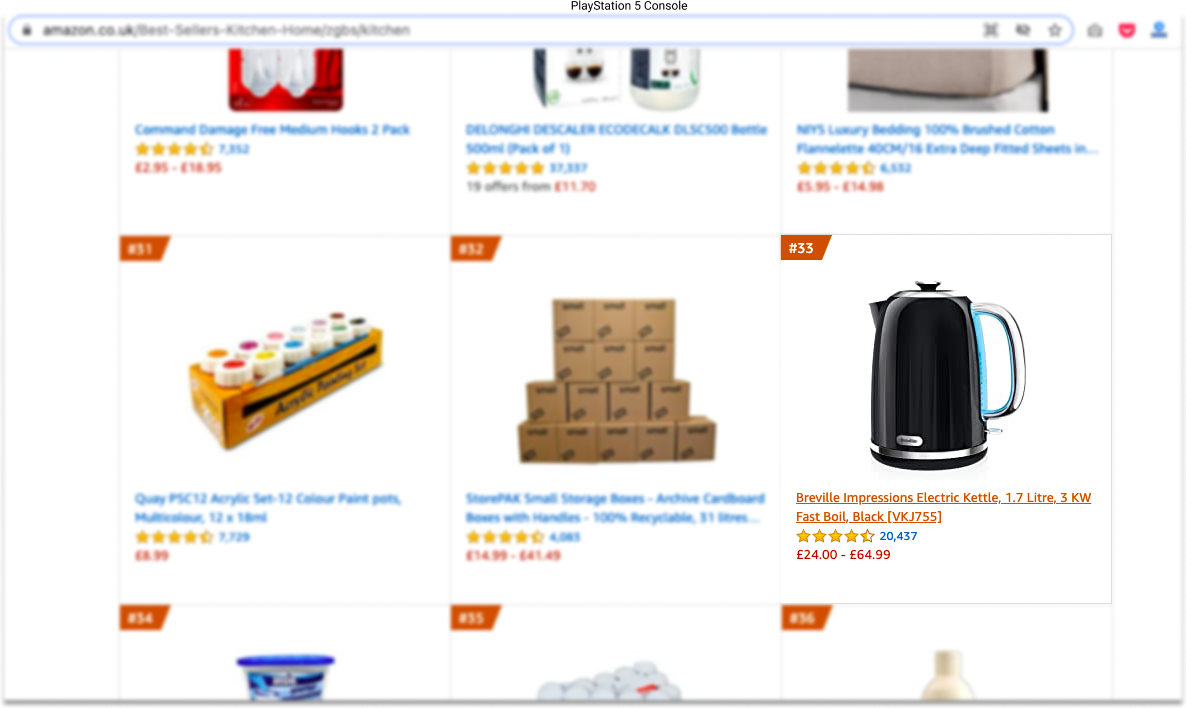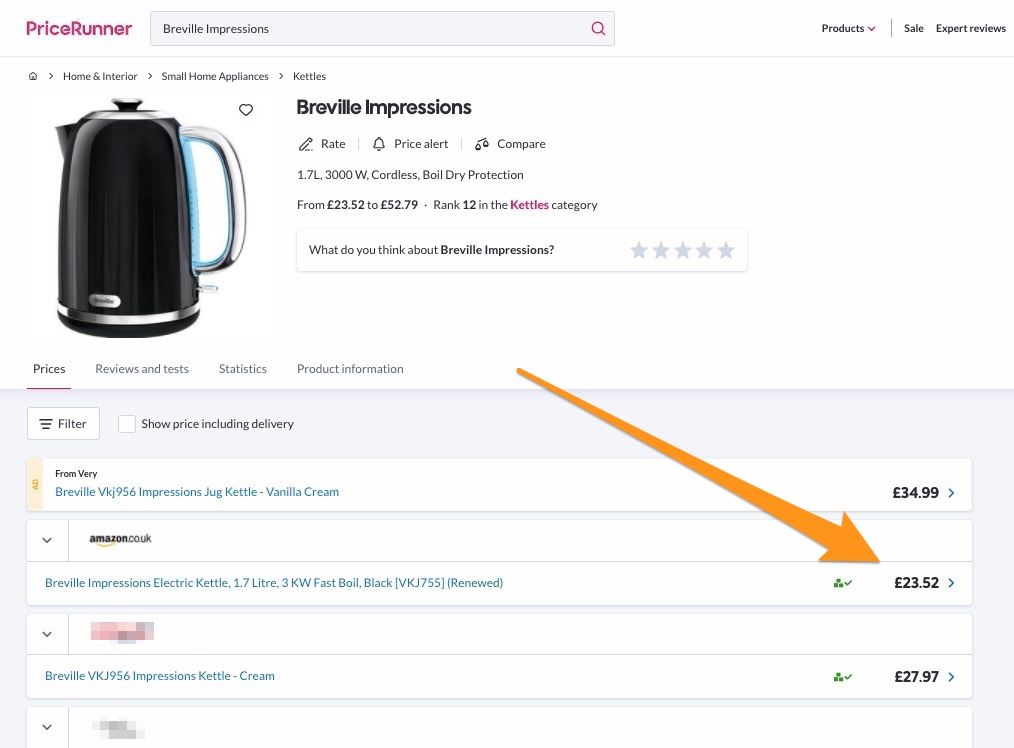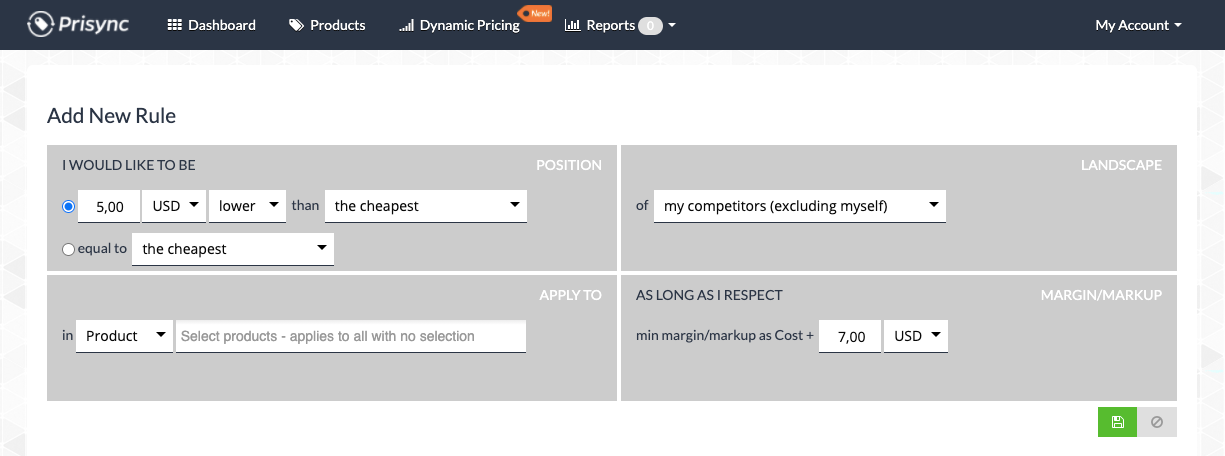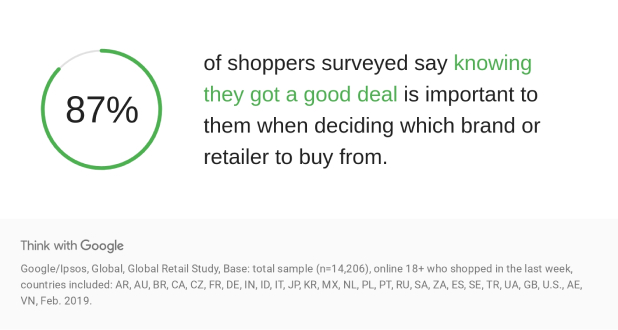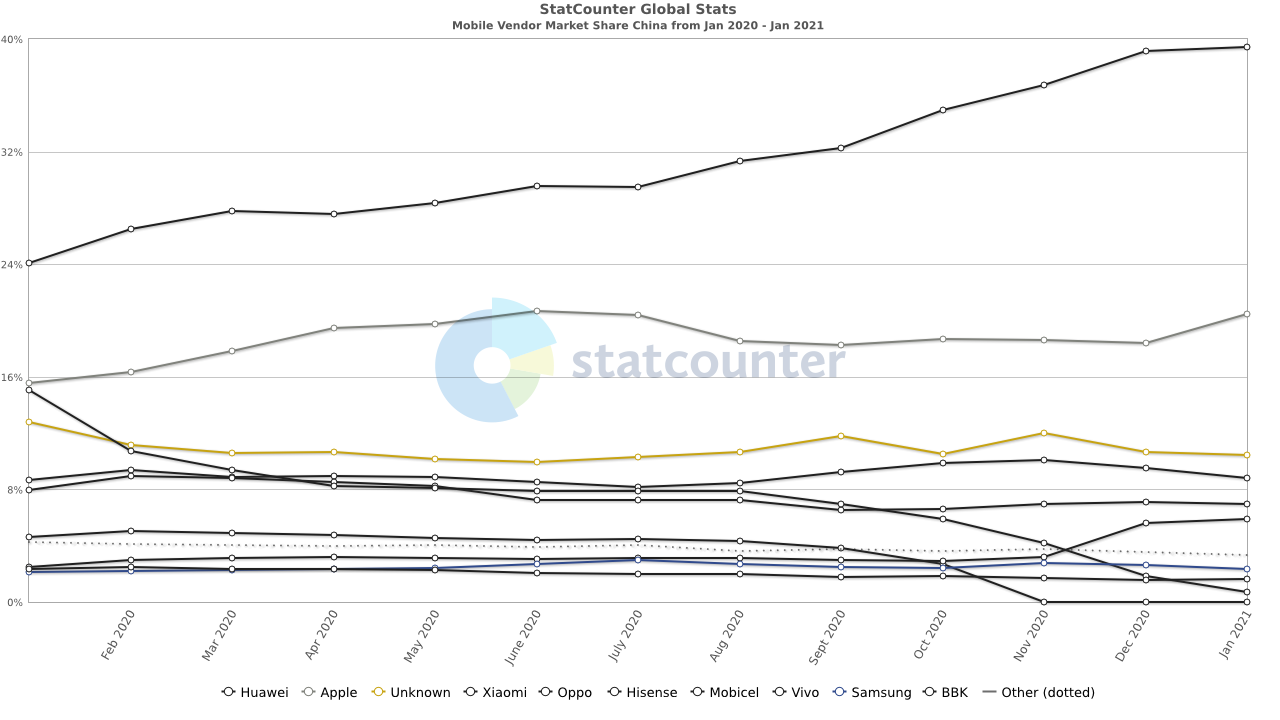There is a lot to learn from retail giants. Not just from their success stories, but failures too.
Their experience is invaluable for SMBs that operate on tight budgets, and are more reluctant to take risks.
That’s why in this blog, we’ll talk about:
- How Amazon carefully—and successfully—builds a perception and how you can too
- How people perceive dynamic pricing and when it’s fair
- Why Best Buy failed in the Chinese market what can you learn from it
Let’s dive in!
Perception is sometimes reality
Do you think we’re rational decision makers?
A person can make a decision that best suits their interests and needs. That’s possible, for sure.
But there are a lot of times where our knowledge on a matter is partial or incomplete.
People don’t always do what’s best for them. But no judgements—there are too many stimuli around us, and we can’t always measure their impact on our decisions, let alone controlling them.
For instance, all the price points you’re exposed to every day actually influence how much you’d pay for a product or service. It’s almost like your daily dose of TV ads give you an idea about how much you should spend on a TV.
When you’re shopping for one, your brain recalls all the TV prices you see and goes like, “Why on earth would I buy a 15K TV if it’s not made of gold?”.
That must be helpful, right? Seems like a defence mechanism.
Not always. Because sometimes, even the most irrelevant inputs shape our decision-making.
In a study on price perception, researchers asked a group of consumers to choose between a regular $6 pen and a Cross pen. Another group had to choose between the same $6 and Cross pens, and an additional one that clearly was the least attractive among all.
Interestingly, the second group had a higher share of people that chose the Cross pen over the $6 pen.
That meant, although very few people ended up picking the inferior option, its mere existence had some sort of impact on the group’s decisions.
And do you know who most successfully turned this cognitive tendency to their advantage?
Amazon—hardly surprising, I know.
One proven pricing strategy Amazon nails is always offering competitive prices on popular products.
Source (Note that these lists are updated sometimes even hourly.)
If you search for these products on a price comparison website, there’s a good chance that you’ll see the best deal on Amazon.
These Amazon Best Sellers are great in bringing traffic to the marketplace, and product pages are designed to encourage cross-sells.
According to a former Amazon Business Leader and founder and CEO of CommerceIQ Guru Hariharan, Amazon’s purpose using this strategy is to build the perception that it’s the cheapest address for everything you’re looking for.
You might say, there’s no way I’m falling for that. But do you actually know what happens at the exact moment you’re shopping?
Amazon’s pricing strategy is built upon the presumption that when we’re buying something that’ll cost a good percentage of our income, we’re paying more attention to its price.
And vice versa—we’re not that price-sensitive on less costly products.
So once we feel like we’re getting a good deal on this big purchase, we’re less reluctant to add some accessories to the cart.
In the long run, we’re saving less than we think we do.
That should remind you, even the simplest strategy can work wonders if you plan it right.
Alright, so Amazon nails this strategy, but how do they have such great control over their positioning?
Dynamic pricing is fair, price testing based on demographics is not
Amazon pioneered the use of AI and machine learning in the retail sector, and it was a turning point for all retailers.
Long gone were the days these industry leaders manually set prices—that was not even possible with their gigantic assortments.
And their use of these dynamic pricing algorithms influenced the industry as a whole.
Harvard Business School Professor Alberto Cavallo studied the frequency of price changes in the US retail market between 2008 and 2017, and two of his findings are truly illuminating.
First, this “Amazon effect” as Cavallo calls it has been shaping the dynamics of the competition by forcing small retailers to change their prices more frequently.
Seeing Amazon change prices often, small businesses realised that they have to be more flexible to make sure they’re not left behind the competition.
Because they knew online prices are transparent. And shoppers easily compare prices on multiple stores to see where the cheapest offer is.
So in a sense, competing on price was not an option, it was a necessity.
But of course, such a shift to technology on such a scale had carried its risks.
In 2000, Amazon faced a backlash from customers who bought the same DVDs at different prices. Interestingly, the reason they’ve paid different prices was that they used different browsers. This was not fair in any circumstances, and there was no way the company could legitimise what they did.
In an interview with The Associated Press, Jeff Bezos apologised to affected customers:
“We’ve never tested and we never will test prices based on customer demographics. What we did was a random price test, and even that was a mistake because it created uncertainty for customers rather than simplifying their lives. The policy we put in place two weeks ago removes that uncertainty.”
Cavallo’s second finding shows that retail chains used to charge somewhat different prices across the country, but later were forced to go with a unitary pricing structure. Because online prices are transparent.
So how do you build a market-oriented dynamic pricing strategy that allows you to compete with giants like Amazon, but not alienate your customers in the process?
Dynamic pricing in a fair way
You really should stay away from demographic segmentation when it comes to pricing. It works well in so many areas of marketing, but just not pricing.
Instead, use dynamic pricing software—or have people build one for you—that uses competitor pricing data, your costs, and target profit margins when setting a profitable price.
Set dynamic pricing rules like:
- My price should be 5% cheaper than my cheapest competitor, but not lower than my cost + 7% markup.
You can also use currency units if you’re not comfortable with percentage calculations:
This way, you’ll be able to compete with other stores’ offers without compromising profits. But more importantly, you’ll position yourself just as you want.
Meaning, regardless of competitors’ price changes, you can match or beat their prices—or more expensive, depending on your pricing strategy.
Know a market before entering
Have you heard about Best Buy’s expansion to the Chinese market?
Not your fault if you haven’t, because that was a story cut short.
In 2006, Best Buy entered the Chinese market. But the giant couldn’t compete with the regional players, because it was impossible to match or beat their low prices.
Considering price is a top priority for the consumer, that doesn’t come as a surprise.
And that’s how their China adventure ended.
What’s striking in this story is that even a giant like Best Buy, despite their years of experience, can fail to put up a risk-free plan before taking such an important step.
But don’t worry, because there is a safe path to expanding your business to markets abroad.
Identify the competition
Once you find the right products to sell, the next step is understanding the dynamics of the competition.
First, start by identifying your competition—direct and indirect.
Direct competition refers to companies that sell what you sell: identical brands and models. Indirect competition is the stores that sell close substitutes.
Keep in mind, what’s considered as alternatives for each other depends on the characteristics of a market. Take the consumer electronics market for instance.
Now, if you’re selling iPhones in the US market, you probably don’t consider Huawei smartphones as close substitutes for your products. Even if all smartphones have similar technologies, Huawei is not an important player in the US smartphone market due to government sanctions.
What if you stick with the same marketing strategy when expanding to another market?
Before anything else, you’ll miscalculate the size of your target market for not considering Huawei’s market share.
You might think the Huawei example is too obvious for anyone to overlook. But not everything might come to your knowledge without an effort.
So, you’ve found out who your competition is. What’s next?
Start monitoring their prices from early on
If possible, start tracking competitors’ prices several months before you officially enter the market.
Doing this will tell you several things:
Is there competition on price (in 95% of the cases, the answer will be yes)
Who offers the most competitive prices (which gives you an idea about their cost advantages—or the lack of it)
How frequently they make a price change
What kind of discounts they offer
- Type: Percentage, dollar, Buy One Get One Off, etc.
- Reach and Scope: Store-wide discounts, personalised discount emails, etc.
- Timing: Seasonal, random, following competitors, etc.
- Frequency: Monthly, weekly, etc. (how frequently they send discount emails, for instance)
How do they behave when entering a new market (will reveal the best practices in that local market—penetration pricing, for one)
We’ll talk about why these are crucial to know before entering the market. But let’s go over the three ways of monitoring your competitors’ pricing moves.
Manual tracking
If you’re planning to sell several products that can be found in just 15 other stores, perhaps manual tracking is the way to go.
Otherwise, you’d waste too much time.
Manually tracking 20 products on 15 competitor stores takes nearly four hours.
And by the time you’re done, there’s a good chance that your competitors will make a price change. Don’t forget that Amazon changes prices every ten minutes.
Price tracking software
One alternative is using price tracking software. This means automating the process, letting the engine handle this never-ending task.
Pricing software brings you accurate and up-to-date price and stock availability information. Although often perceived as more expensive, using software is much cheaper than manual tracking. Because the hidden cost in not using any automation is the time you spend inefficiently.
In-house engine
Last but not least, you can have someone build a price tracking engine for you.
If you need extra functionality that can’t be found in existing tools, build an engine tailored to your needs.
Just keep in mind that software needs maintenance so it’ll come with monthly maintenance fees.
So, one way or another, you started tracking competitor prices. What’ll you do with the data? How do you make it useful?
Adapt and survive
One reason Best Buy failed was that they underestimated their costs.
The giant wasn’t able to offer competitive pricing due to their high costs, and their policies didn’t help either.
For example, they stuck with their store warranty policy in the Chinese market where shoppers are used to manufacturer warranties. This further inflated their costs, making it even more difficult to compete with the local players.
They offered something that didn’t entice shoppers but added to their costs. In a sense, they failed to adapt their strategies.
Instead of insisting on what you know, try to understand the dynamics of the target market and adapt your strategies accordingly.
Parting words
Pricing is a powerful tool if you know how to use it. But trying out new pricing strategies can be a time suck or cost too much. Or it might even be too risky.
That’s why you should take a look at what large companies have experienced throughout the years.
If they’ve managed to overcome the problems, you’ll be seeing how they react when faced with a crisis.
If they’ve failed completely, you’ll be seeing where it all went wrong. You’ll find out if they misidentified the problem, or came up with the wrong solution.
The bottom line is, learning from others’ mistakes is like a free ride. You’re not taking any risks, but learning a lot. Do this more often.
Originally published Mar 23, 2021, updated Jan 16, 2023

